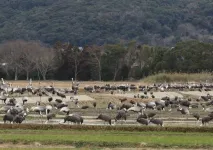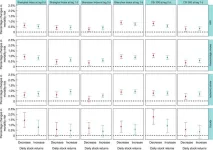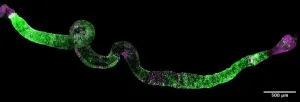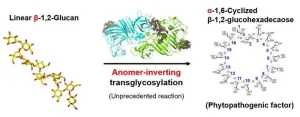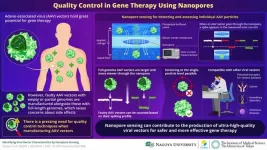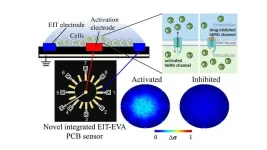(Press-News.org) (WASHINGTON, August 1, 2024) — In a year-long pilot program, external mentorship increased confidence, furthered career development, and facilitated networking opportunities for trainees in classical hematology, according to a study published in Blood Advances.
Classical hematology, the study of non-cancerous blood disorders such as sickle cell anemia and thrombotic and hemorrhagic disorders, is projected to face a significant workforce shortage in the coming years. The American Society of Hematology’s (ASH) previous surveys of hematology/oncology program directors and fellows both found that only 5% of fellows planned to pursue classical hematology. Mentorship has been identified as the most important factor in encouraging trainees to pursue and remain in the field, particularly in underrepresented subspecialties like classical hematology.
“I’ve seen trainees who were initially interested in classical hematology go on to pursue something different like bone marrow transplantation because of a lack of mentorship,” said Soo Park, MD, associate professor at the University of California San Diego School of Medicine, UC San Diego Moores Cancer Center member, and study author. She herself had considered a career in classical hematology but chose to specialize in medical oncology after encountering the same challenge. “There is a real need for mentorship in classical hematology, and an external program like this could help fulfill that need.”
Under a mentorship program developed through the ASH Medical Educators Institute, Dr. Park and her colleagues paired hematology/oncology fellows interested in classical hematology with mentors outside of their institutions to meet virtually each month for one year and complete an optional scholarly project.
All 35 mentees who applied to the program were paired with a mentor based on their interests within classical hematology, area of expertise, career plans, personal experience, gender, race, ethnicity, and top choice of mentor. Thirty-four mentors took part in the program, as one mentor’s field of interest aligned closely with two mentees. Only two mentor/mentee pairings did not see the program through to completion.
The program’s feasibility and impact were primarily evaluated through mentor and mentee surveys conducted six months into the program, upon completion of the program, and six months after completion. The surveys contained multiple choice, five-point Likert scale, and free text items. Additionally, after completing the program, two mentees participated in in-person interviews, while six others took part in a virtual focus group.
Of the 32 mentees and 27 mentors who responded to the survey distributed at completion of the program, 30 (94%) mentees and 23 (85%) mentors reported that their assigned mentor or mentee was a good match while 18 (56%) mentees and 14 (52%) mentors planned to continue their relationships after the program. Nineteen percent (59%) of mentees were able to connect with faculty outside of their assigned mentor during the program, indicating that this program helped mentees connect with other potential mentors.
Participation in the program had a substantial impact on trainees’ interest in and continued pursuit of classical hematology. Most mentees reported that the program improved their confidence in pursuing classical hematology as a career (78%), facilitated career development (78%), and/or had a positive impact on their sense of professional identity (88%). Further, 20 (63%) mentees participated in optional scholarly projects with their mentors, with many reporting that the experience afforded them opportunities to obtain awards and grants, present at conferences, and secure academic faculty positions.
“This study shows that effective, deliberate mentorship is vital for career advancement, especially for trainees,” said Zoya Qureshy, MD, a current internal medicine chief resident at UC San Diego and study co-author. “Virtual communication can foster strong external mentorships and relationships for those who might not have as much institutional, local mentorship readily available.”
Mentors also positively received the program. Twenty-five (93%) mentor survey respondents thought the pilot program was a good resource for their mentee, 26 (96%) felt the program contributed to their trainee’s career development, and 100% believed the program would increase retention in classical hematology.
“The success of this pilot program could show other subspecialties that it is feasible to have mentorship opportunities outside of one’s own institution,” said Dr. Park. “It opens up possibilities of reaching out to trainees earlier on in their training or even to those pursuing a PhD.”
The study did have some limitations, including that feedback from mentors and mentees, which was neither obligatory nor collected anonymously, may have been vulnerable to self-reporting and/or sampling bias. Additionally, participating mentees may have been self-selecting, as most had prior classical hematology mentoring and research experiences, and some had previously received ASH awards. The study sample size was also relatively small.
Drs. Park and Qureshy are currently working in partnership with ASH to expand the mentorship program through ASH’s Classical Hematology Advancement Mentorship Program (CHAMP), which will connect fellows interested in classical hematology with mentors. CHAMP will open for mentor and mentee applications in Fall 2024.
###
Blood Advances (bloodadvances.org) is an online, open-access journal publishing more peer-reviewed hematology research than any other academic journal worldwide. Blood Advances is part of the Blood journals portfolio (bloodjournals.org) from the American Society of Hematology (ASH) (hematology.org).
Claire Whetzel, 202-629-5085
cwhetzel@hematology.org
END
Fukuoka, Japan – Researchers from Kyushu University have discovered that blowflies, a family of flies strongly attracted to decaying flesh and feces, are carrying the bird flu virus in southern Japan. Their findings, published in Scientific Reports, introduce a potential new route of transmission for bird flu and highlight the need to develop new countermeasures to prevent and control the disease in poultry farms.
Since 2020, bird flu has been spreading rapidly around the globe, leading to the death of millions of wild birds and the culling ...
In a recent study published in Engineering, a team of Chinese researchers has uncovered a startling correlation between stock market volatility and the risk of major adverse cardiovascular events (MACEs) and suicide. The research, which analyzed over 12 million deaths across China from 2013 to 2019, provides compelling evidence that the psychological stress induced by stock market fluctuations has severe and immediate health implications.
The study, titled “Stock Volatility Increases the Mortality Risk of Major Adverse Cardiovascular Events and Suicide: A Case-Crossover Study of 12 Million Deaths,” is a wake-up call for investors, ...
Judging how happy you are could backfire and negatively impact life satisfaction and psychological well-being, according to research published by the American Psychological Association.
In three experiments comprising more than 1,800 participants, researchers found that having concerns or judgments about one’s own level of happiness were associated with lower well-being, due in part to greater negativity and disappointment about positive events.
The research was published in the journal Emotion.
Thinking too much about one’s own level of happiness could be related to fears about not measuring up or not being as happy as other people, said lead researcher Felicia ...
In the United States and worldwide, cardiovascular disease is the leading avoidable cause of premature death and disability. Primarily heart attacks and stroke, cardiovascular disease accounts for more than 900,000 annual deaths nationally and about 10 million deaths globally.
Uncontrolled hypertension or high blood pressure is a major risk factor for stroke and heart attacks. Prevention and management of cardiovascular disease involves therapeutic lifestyle changes such as diet and exercise and adjunctive drug therapies of proven benefit.
In a commentary published in The American ...
Researchers including those from the University of Tokyo’s Graduate School of Pharmaceutical Sciences transferred genes from simple organisms capable of regenerating their bodies into common fruit flies, more complex animals that cannot. They found the transferred gene suppressed an age-related intestinal issue in the flies. Their results suggest studying genes specific to animals with high regenerative capability may uncover new mechanisms for rejuvenating stem cell function and extending the healthy lifespan ...
Plant diseases pose significant challenges to agricultural productivity, presenting formidable hurdles that require urgent attention. Left unchecked, these diseases can spread rapidly, inflicting widespread damage on crops and leading to reduced yields and substantial economic losses. Therefore, accurately identifying the pathogens responsible for these diseases is crucial. This identification allows for targeted interventions that minimize risks and effectively mitigate the agricultural impacts.
Xanthomonas species are notorious plant pathogens that affect a broad spectrum of hosts, including key crops like rice, wheat, and tomatoes. These pathogens augment ...
The development of human societies is concurrent with infrastructural changes, evidenced by rapid urbanization in recent years. We are moving towards the era of 'smart cities' powered by advanced technology—such as artificial intelligence (AI), the Internet of Things, and big data analytics—for sustainable urban development. However, climate change has been hampering this growth—earthquakes and other natural hazards negatively impact buildings and other structures in their wake.
Soil liquefaction is an example of a natural ...
Over the past few decades, there has been remarkable progress in genetic manipulation technologies, bringing us closer to the point where genes can be modified in vivo. Such tools would open up the way to gene therapy, ushering in a new era in medicine. Thus far, the most promising strategies for gene therapy involve leveraging the existing molecular machinery found in viruses.
In particular, adeno-associated virus (AAV) vectors have recently garnered significant attention from the scientific community, given their potential to serve as nucleic acid vaccines ...
When developing new drugs, understanding their effects on ion channels in the body, such as the human ether-a-go-go-related gene (hERG) ion channel found in neurons and heart muscle cells, is critical. Blocking hERG channels can disrupt normal heart rhythm, potentially leading to a fatal condition known as torsade de pointes. Current methods for assessing these effects typically involve invasive procedures like patch-clamp techniques or fluorescence microscopy. These methods alter cell properties and may affect measurement accuracy, requiring specialized equipment ...
Much of the water in the West is transported across vast geographical areas by large infrastructure projects known as interbasin water transfers. Two of these projects in particular make up 85% of all energy-related greenhouse gas emissions associated with U.S. interbasin transfers — one in Arizona and the other in California — according to the new research published this week in the journal Nature Water.
The project in Arizona is known as the Central Arizona Project and in California it’s the State Water Project.
“You hear a lot about these big projects and how much energy they use,” said Avery Driscoll, a doctoral student in ...
